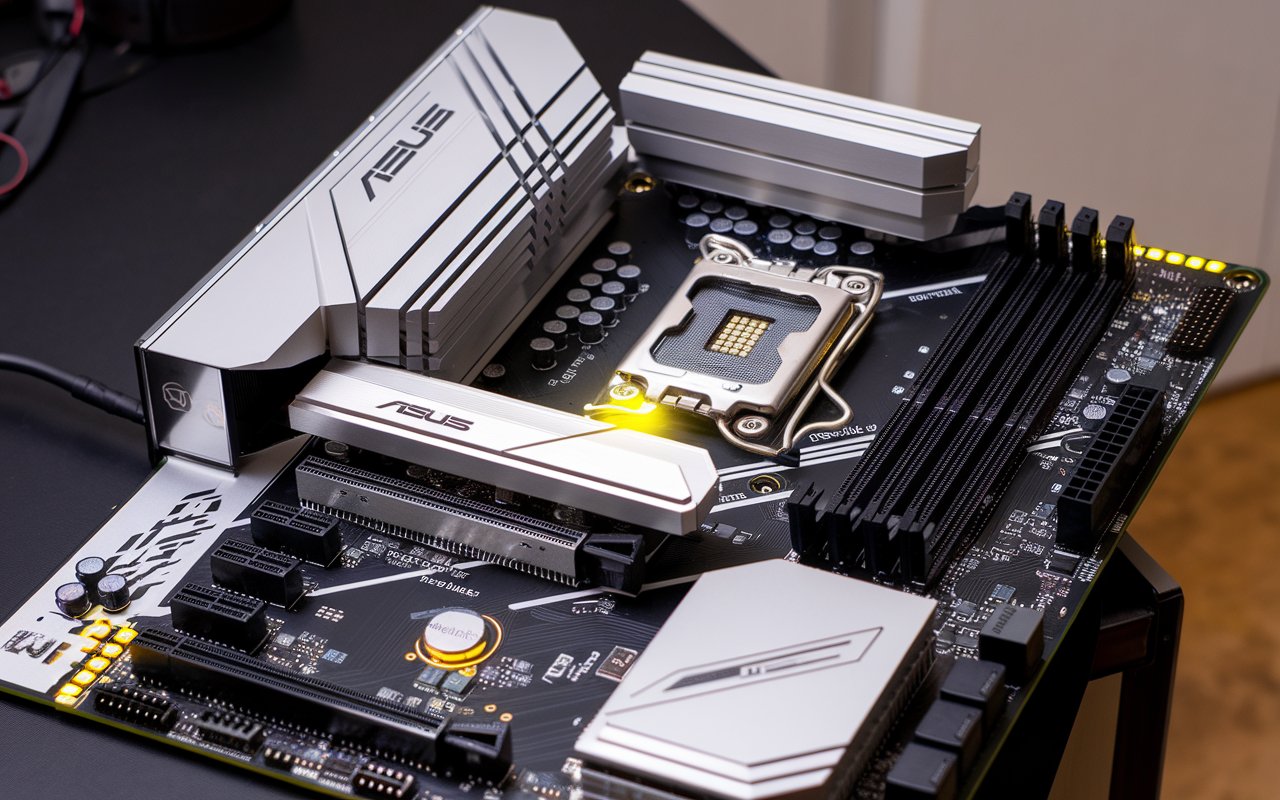
The yellow light on an ASUS motherboard is a diagnostic tool designed to help users identify hardware issues.
Often linked to memory (DRAM) problems, this light can be a key indicator during troubleshooting. Whether it’s a motherboard yellow light, mobo yellow light, or a yellow DRAM light on the motherboard, understanding its signals is crucial for resolving system errors.
Additionally, the combination of red and yellow lights on the motherboard can point to more complex issues. In this guide, we’ll explore the causes, meanings, and solutions for these indicators.
What Does the Yellow Light on the Motherboard Mean?
The yellow light on an ASUS motherboard usually indicates an issue with the DRAM. It suggests the system is struggling to detect or initialize the RAM properly.
What Is the Difference Between a Yellow and a Red Light?
A yellow light generally relates to memory (DRAM) problems, while a red light on the motherboard can indicate more critical issues, such as CPU or graphics card failures.
What Causes the Yellow DRAM Light on the Motherboard?
The yellow DRAM light often occurs due to improperly seated RAM modules or compatibility issues. Faulty RAM sticks can also trigger this light.
Can Dust Cause the Yellow Light on the Motherboard?
Dust buildup can interfere with proper contact between the RAM and motherboard, leading to the mobo yellow light issue.
Does Overclocking RAM Cause the Yellow Light?
Yes, overclocking RAM beyond its stable limits can trigger the yellow DRAM light due to instability.
Can External Factors Cause the Yellow Light on a Motherboard?
Yes, factors like electrical surges, unstable power supplies, or incorrect component installation can cause the yellow light.
Does the Yellow Light Mean Permanent Damage?
Not necessarily. It often points to temporary issues like misaligned RAM or incorrect BIOS settings, which can be fixed.
How Do I Fix the Motherboard Yellow Light?
First, reset the RAM sticks and ensure they are securely placed. If the problem persists, try replacing the RAM or checking for compatibility with the motherboard.
Can a BIOS Update Solve the Yellow Light Problem?
Yes, a BIOS update can sometimes resolve the motherboard yellow light issue by improving hardware compatibility or fixing bugs related to memory initialization.
Does the Yellow Light Always Mean a Hardware Problem?
Not always. Sometimes, a yellow light can appear due to incorrect BIOS settings or insufficient power delivery to the RAM.
What Should I Do If Both Red and Yellow Lights Appear?
Red and yellow lights on the motherboard indicate multiple issues, possibly with the CPU and RAM. Ensure all components are properly seated and test them individually.
How Do I Check Compatibility Between My RAM and Motherboard?
Refer to your motherboard’s QVL (Qualified Vendor List) to confirm if your RAM is supported. This list is available on the ASUS website.
What Is the Role of the MOBO Yellow Light in Diagnostics?
The mobo yellow light is part of a diagnostic system that helps identify specific hardware problems, reducing troubleshooting time.
Can Power Supply Issues Trigger the Yellow Light?
Yes, an inadequate or faulty power supply can cause the yellow light by failing to deliver sufficient power to the RAM or motherboard.
Why Is the Yellow Light Blinking?
A blinking yellow light on the motherboard often indicates a power-related issue or a short circuit. Inspect the PSU and cables for faults.
What Does the Yellow DRAM Light Mean During Boot-Up?
The yellow DRAM light during boot-up signals that the motherboard is checking the RAM. If it stays on, there may be an issue.
How Can I Identify Faulty RAM?
Use tools like MemTest86 to diagnose RAM issues. Physical signs like bent pins or overheating modules also indicate faults.
Why Does the Yellow Light Appear After Adding New RAM?
The yellow light may appear if the new RAM is incompatible or not properly seated. Check the specifications and reseat the RAM sticks.
How Do I Reset BIOS to Fix the Yellow Light?
You can reset the BIOS by removing the CMOS battery for a few minutes or using the BIOS reset jumper on the motherboard.
What Does a Solid Yellow Light Mean Compared to a Blinking One?
A solid yellow light indicates a specific hardware issue, such as with the RAM, while a blinking light may suggest power instability.
If the light persists after troubleshooting, consider replacing the faulty hardware or seeking professional repair.
FAQs
1. What is the yellow light on my Asus z790 H?
The yellow light on your ASUS Z790 H motherboard typically indicates a DRAM (memory) issue.
2. Why is my ASUS battery light orange?
The orange light on your ASUS device’s battery indicates it is charging.
3. How do I reset my Asus battery?
To reset your ASUS battery, disconnect it, hold the power button for 30 seconds, reconnect, and charge fully.
4. How do I repair startup in BIOS?
To repair startup in BIOS, access the BIOS menu, set the correct boot drive, and enable “Startup Repair” from a recovery disk or USB.
5. What is a steady yellow light on a motherboard?
A steady yellow light on a motherboard usually signals an issue with the DRAM or memory module.
6. What do motherboard light colors mean?
Motherboard light colors indicate hardware status: yellow for RAM issues, red for CPU or critical errors, white for GPU, and green for successful boot.
7. What are the 4 lights on the motherboard?
The 4 lights on a motherboard typically represent diagnostics: CPU, DRAM, GPU, and BOOT status.
8. Will a PC boot without RAM?
No, a PC will not boot without RAM as it is essential for loading and running the system.
9. Why is my ASUS motherboard stuck on orange light?
Your ASUS motherboard may be stuck on an orange light due to a RAM issue, such as improper seating or faulty memory modules.
10. How to check the motherboard model?
You can check your motherboard model by looking at the label on the motherboard or using software like CPU-Z.
Conclusion
The yellow light on an ASUS motherboard typically indicates a DRAM issue, often related to improper seating or faulty memory.
Red and yellow lights together may signal critical problems, such as CPU or memory failure. To resolve these, ensure all components are securely connected and compatible.
If issues persist, consider replacing faulty hardware or updating the BIOS. Monitoring motherboard light codes helps diagnose and fix issues effectively.






